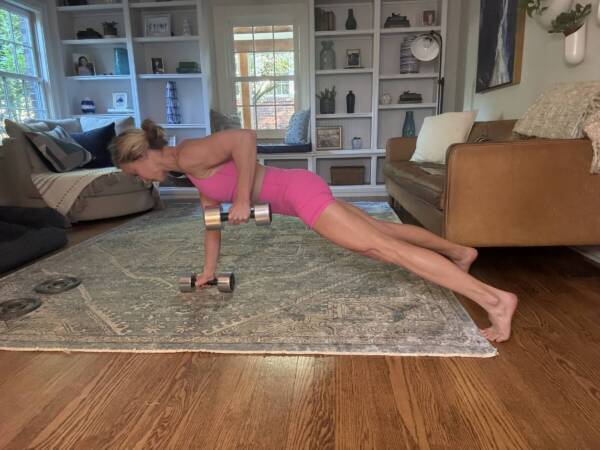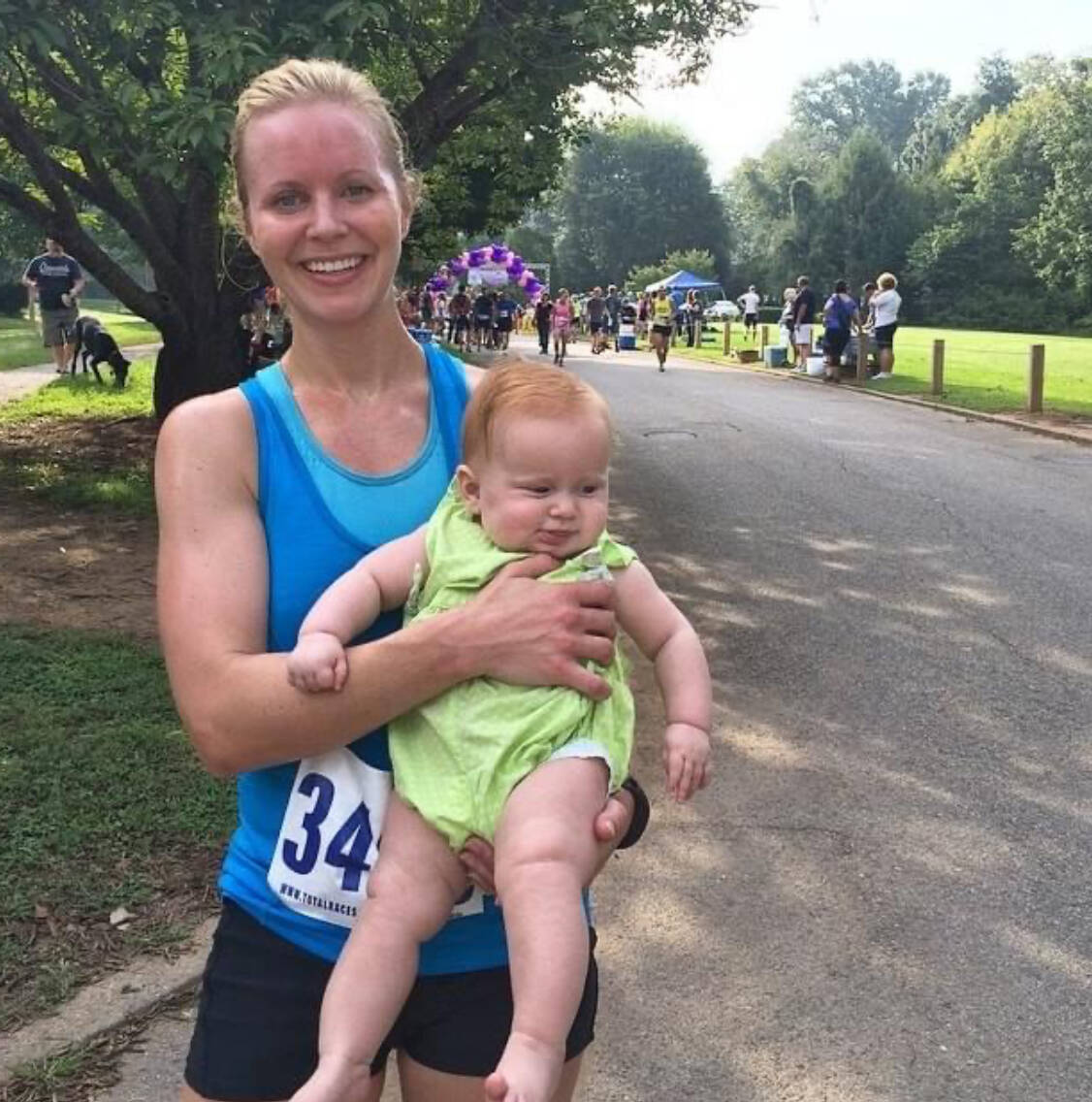Can You Recover from Hitting the Wall in a Marathon? (5 Tips)
Hitting the wall happens in a marathon is when your body has burned through all its glycogen stores (energy stores) in the liver and muscles which are the quickest and easiest fuel for your body to use to run. Proper training and proper nutrition can help runners avoid hitting the wall in the marathon.

The biggest obstacle to completing 26.2 for most recreational runners is hitting the wall in the marathon–this is when your body essentially runs out of fuel for faster running. Your body slows down, your legs feel heavy, and it requires a lot of mental and physical effort to keep moving forward. It stings so badly because so many runners have beautiful and perfect training cycles that are completely sabotaged when they come up against the marathon wall.
Table of contents
I’ve run almost ten marathons in my life and I think I’ve hit the wall in plenty of them. Early on, I hit the wall because enery gels weren’t well publicized or used. Later on, I hit the wall because I went out too fast or over-estimated my marathon fitness.
As a result, I have embarked on a quest on how to AVOID THE WALL! I’m sharing what I have learned. (And don’t miss my 26 tips for going 26.2!)
5 Tips to Recover from Hitting the Marathon Wall
Continue fueling.
Unless you are experiencing GI distress, continue your marathon fueling. It may be hard mentally to keep taking in gels, water, and electrolyte drinks but it will help. You cannot fully reverse hitting the wall, but you can slow the effects.
The quickest absorbing energy gels take 15 to 20 minutes to noticeably have an impact, 60-75 minutes to absorb fully, and peak around 30-45 minutes. Meanwhile, you burn through a gel in about 30 minutes. (Though your metabolism and absorption rates may be slower in glycogen depletion). This means that you will be using what you take in, but the gels will have a cumulative effect.
Therefore, taking in energy gels and drinks will keep you going and may even allow you to have a finishing kick in your marathon. So, keep up the fueling!
Distract yourself.
Research finds that disassociative thinking (thoughts unrelated to the marathon you’re running) may help you recover from hitting the wall in the marathon.
Some thoughts include making your grocery list or planning your perfect vacation in your head and going through the steps of how to make that happen.
Make a friend.
Studies also show that social support can help you move past the wall in a marathon. So, even if it takes a lot of effort, start talking to a runner around you. Tell them good job, or comment on the course, weather, or crowds.
You can also give a spectator a high-five or thank them for cheering you on. This positive energy will give you a positive feedback loop that will help override the negative thoughts swirling in your brain.
Positive self-talk.
Studies support that positive self-talk reduces negative thinking when you hit the marathon wall. Find a mantra such as “I am strong” or “This is tough, but I’m tougher” to keep you going.
A good mantra should be something simple that is easy to repeat rhythmically, matching your footsteps. It should also reconnect with your why.
Is your why to show your kids what it means to be courageous? Or to be healthy for your family? Or to teach your children what it means to work hard towards a goal?
Nail down your mantra before you begin your race. And have it at the ready when things get tough. At this point, it can also be helpful to not look at your GPS watch as it may give you negative feedback. Instead, focus on one positive good thing, even if that is just that your left forearm feels good.
Reframe your goals.
If you had a goal finish time and that seems impossible, forget about it. Reframe your goal to the current moment: focus on the mile you are in. Put one foot in front of the other. Listen to your breath. And reaffirm to yourself what a tough person you are.
FAQs about Hitting the Wall in a Marathon
What does it mean to hit the wall in a marathon?
The phrase “hit the wall” means encountering an obstacle that inhibits progress like running into a brick wall. When you hit a wall in a marathon, it’s difficult to keep moving forward, especially at your goal marathon race pace.
Hitting the wall happens in a marathon is when your body has burned through all its glycogen stores (aka carbs energy stores) in the liver and muscles which are the quickest and easiest fuel for your body to use to run. This typically happens around the 20-mile mark, sometimes sooner for more slow runners and first-time marathoners. Your body then switches to burning fat as fuel which is a more difficult and slower process. Performing a proper carb load can help avoid this.
As a result, your body tries to conserve energy and protect itself by slowing you down. Your brain will signal the increased production of serotonin to inhibit control of your muscle fibers. This increases physical fatigue and mental exhaustion in which your brain tells you to stop running!
What does hitting the wall feel like?
The result of hitting the wall is sudden fatigue like you’re running in water (hello! Aqua jogging!).
Hitting the wall happens around the 2-hour mark in the marathon or mile 20. Our liver and muscle glycogen stores last on average up to 2,000 calories and we burn roughly 100 calories a mile.
If you’re running faster, you will burn through your stores faster too. Slower runners who burn mostly fat when running may not hit the wall at all.
How long does hitting the wall last?
Once you’ve hit the wall in the marathon, it is very hard to reverse it. Thus, hitting the wall lasts for the remainder of your marathon (about 6.2 miles or more!).
When you hit the wall, your body switches to conservation mode. It’s hard to get out of this mode because even if you’re taking energy gels, they still take about 20 minutes to digest. And by that time, you’ve burned through most of the fuel and it’s time to take another one to keep going!
How do you avoid hitting the wall in a marathon?
There are ways to avoid hitting the wall in the marathon. These ways are tied to proper pacing, fueling, and training.
Proper pacing.
Studies show that going out too fast in a marathon aka faster than you trained for is almost a surefire way to hit the wall in the marathon. Avoid this mistake!
Stay patient and smooth in your race. Follow your race plan and don’t get ahead of yourself. Running 26.2 miles is a really long way to go. And so many novice marathoners get fired up by the crowds and competition, that they run too fast and burn through their glycogen stores too soon.
Proper fueling.
There are two main ways to avoid hitting the wall in the marathon when it comes to fueling: practicing fueling during your long-distance training runs and carb-loading ahead of the marathon.
Fueling your long runs: Your stomach is a muscle that needs to be trained to digest fuel while you run. This requires practice. Your stomach needs blood to help digest food and fuel. When you’re running, blood is diverted to your working muscles, so your stomach needs to do more with less. The only way it can learn to do this is by practicing on your training runs. So, practice fueling on your long runs.
- Aim to take a gel or 30 grams of carbohydrates every 30 minutes with water. Drink sports drinks in between. Practice different fuel sources on your longer runs to see what your body and tummy like.
- Start fueling early and often. Take a gel at the start line and then keep it up. Studies show that those who fuel earlier in a marathon run faster.
- Also aim for about 400 mg of sodium (electrolytes) every 30 minutes. I recommend sipping 3-4 sips of an electrolyte drink a mile, more if it is hot weather conditions. Get more info on hydration here.
Carb loading before the marathon: Stocking your glycogen stores so you have more fuel in your glycogen reserves to burn takes at least 3 days (for most carb load, it should be 7). Don’t rely on a pasta dinner the night before to do this. That may make you feel sluggish in your marathon.
- About a 7 days out from your race, start nearly doubling your carb intake at every meal. Stick to simple carbs like oatmeal, bagels, fruit, and crackers.
- Start drinking electrolytes throughout the day, aiming for about 80 ounces.
- Get up two hours before your marathon and eat a high-carb breakfast. Then eat a high-carb snack of about 250 calories an hour before the race.
Proper training.
The best way to avoid hitting the marathon wall is to do long runs every week in your training. This teaches your body how to store and use glycogen efficiently. You’ll also build mental and physical strength.
Your long run should be about 30 percent of your weekly mileage, more if you’re a low-mileage runner, and run at a conversational pace.
You should include at least one really long run in marathon training in your peak week. This long run will be close to your marathon finish time, but less if your marathon finish time is more than 4 hours (in general, capping at 3:30 for 4-hour marathoners and capping at 4 hours for 5+-hour marathoners).
Running a marathon is no easy feat. And you’re doing it! And you will cross that finish line stronger and with a lot of lessons. Of course, working with a running coach may help you avoid hitting the wall by advising you on the tenets above and giving you a race plan.
Have you hit the wall in a marathon?






